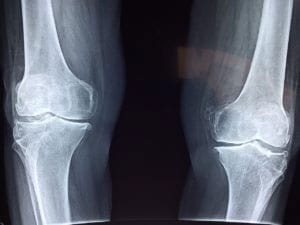Ewing Family of Tumors
What is the Ewing family of tumors?
The Ewing family of tumors is a group of cancers that develop in the bone and surrounding soft tissue. The major forms include: Ewing sarcoma of the bone, peripheral primitive neuroectodermal tumor, and extraosseous Ewing tumor. They most commonly affect young teens, but anybody can be impacted.
What are the symptoms of the Ewing family of tumors?
Most of these tumors form in the bones; they typically grow in the chest wall, pelvis, and legs. Symptoms can differ depending on where the cancer is located. Pain around the tumor is a major symptom, and there is often a lump or swelling around the site as well. Fatigue, fever, and weight loss are other symptoms.
What causes the Ewing family of tumors?
Medical professionals are unsure of the exact cause of this cancer; they know that changes in the DNA lead to cells growing and multiplying rapidly until they form a tumor. They have also discovered sporadic chromosomal mutations that play a role: changes in the EWSR1 gene on chromosome 22. More research needs to be done to understand how this change leads to cancer.
Risk factors include being white, being male, and being a teenager.
How is the Ewing family of tumors diagnosed?
The first step in a diagnosis is a physical exam, followed by an evaluation of medical history. Tests, such as imaging tests, biopsies, blood tests, and bone marrow aspirations, are all used as well.
What are the treatments for the Ewing family of tumors?
Treatment depends on various factors: age and overall health of the patient, location of the tumor, and stage of the cancer. Treatment options include chemotherapy, surgery, and radiation therapy.
Where can I find out more about the Ewing family of tumors?
Ewing Family of Tumors Articles

Rare Community Profiles: The Enemy Inside Me: Brandi’s Journey of Hope and Survivorship After Ewing Sarcoma


TP-1287 Nabs Orphan Drug Designation for the Treatment of Ewing Sarcoma


Virginia Family Donates $100K to Pediatric Cancer Research After Son Dies of Ewing Sarcoma

Trial Sites for Ewing Sarcoma Trial Have Been Expanded in The United States

Research Program Formed to Develop Ewing Sarcoma Immunotherapy




